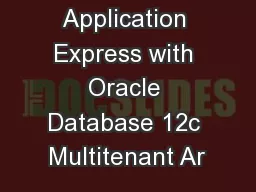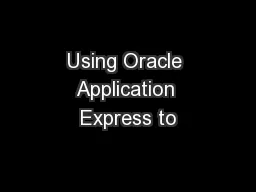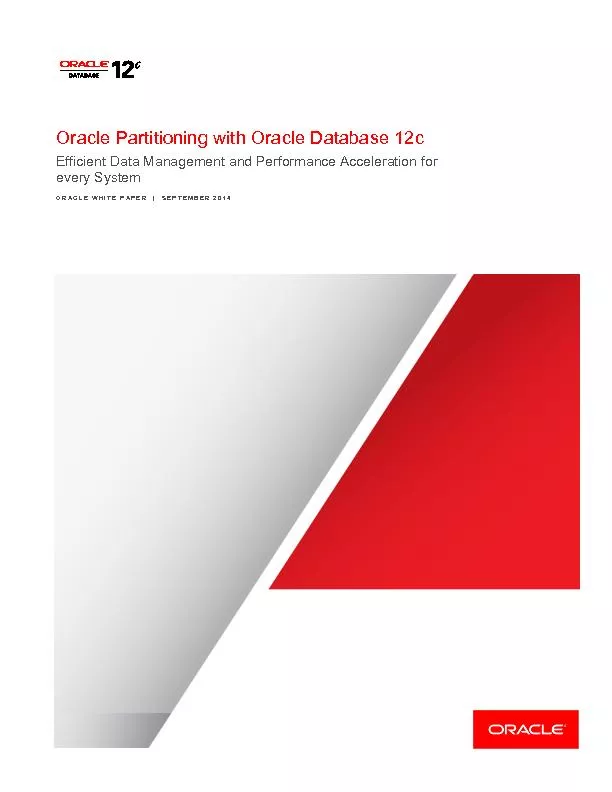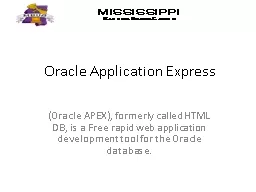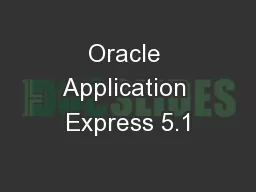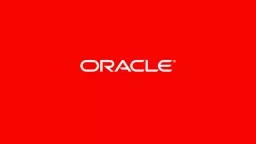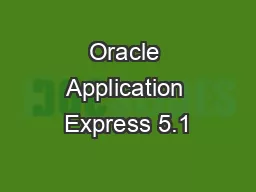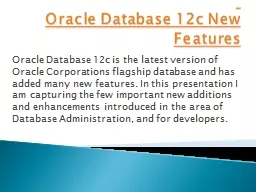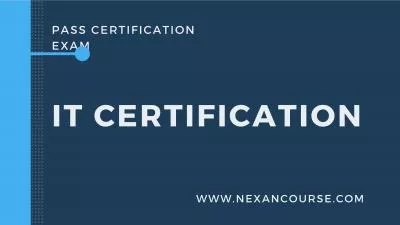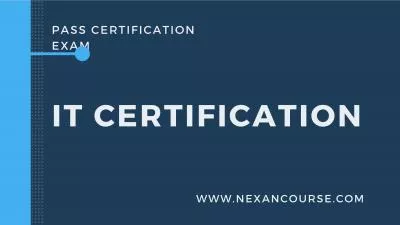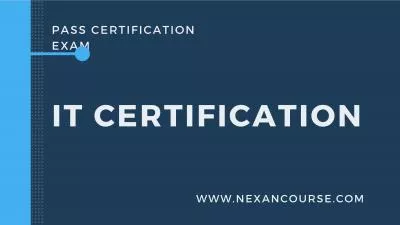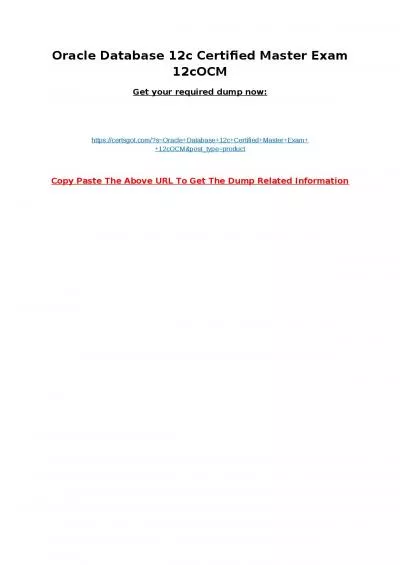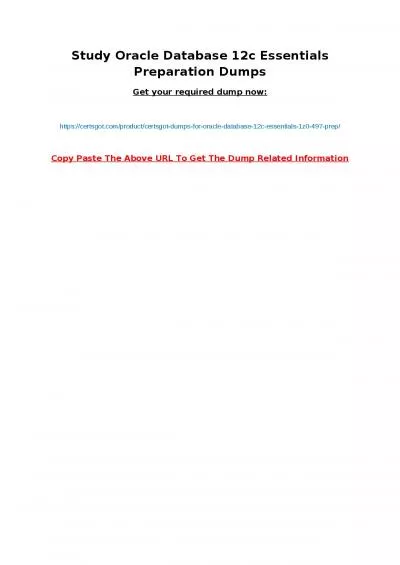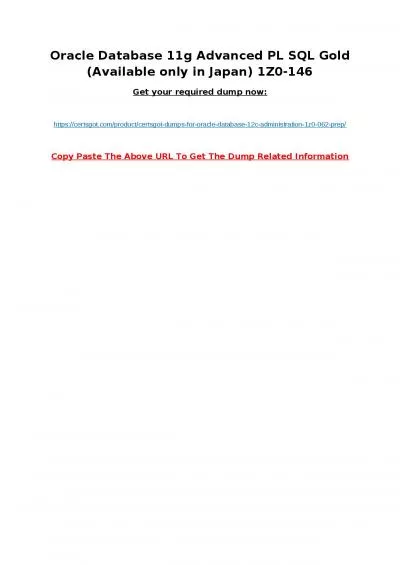PPT-Application Express with Oracle Database 12c Multitenant Ar
Author : kittie-lecroy | Published Date : 2015-10-19
Source Gartner Top Five Trends for Private Cloud Computing February 2012 Thomas J Bittman The following is intended to outline Oracle s general product direction
Presentation Embed Code
Download Presentation
Download Presentation The PPT/PDF document "Application Express with Oracle Database..." is the property of its rightful owner. Permission is granted to download and print the materials on this website for personal, non-commercial use only, and to display it on your personal computer provided you do not modify the materials and that you retain all copyright notices contained in the materials. By downloading content from our website, you accept the terms of this agreement.
Application Express with Oracle Database 12c Multitenant Ar: Transcript
Download Rules Of Document
"Application Express with Oracle Database 12c Multitenant Ar"The content belongs to its owner. You may download and print it for personal use, without modification, and keep all copyright notices. By downloading, you agree to these terms.
Related Documents

